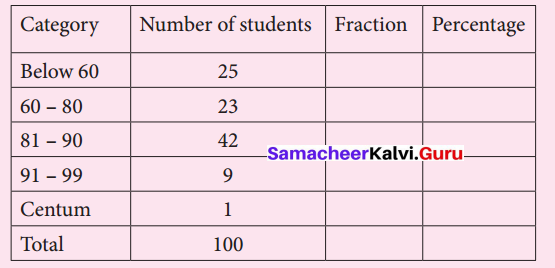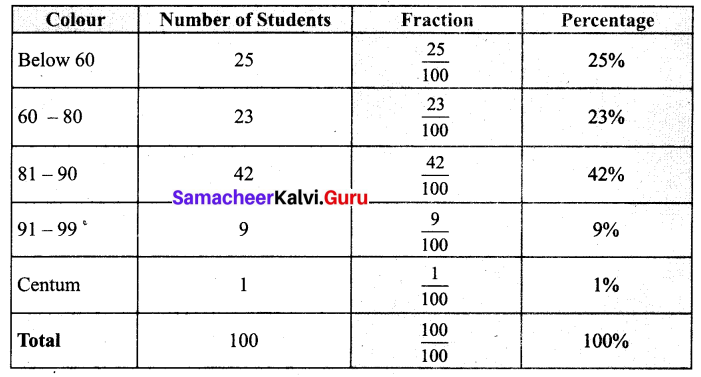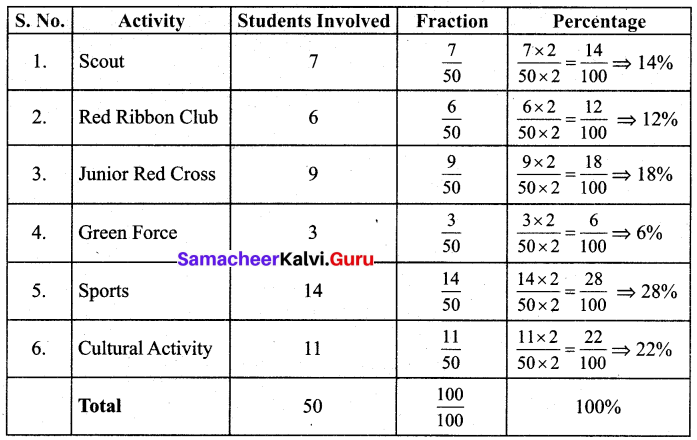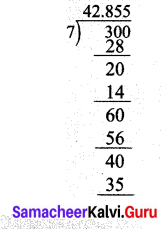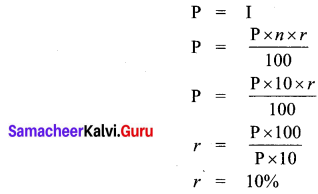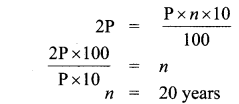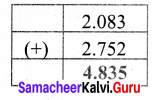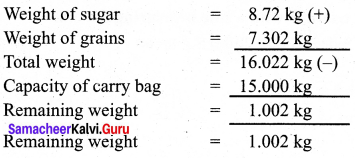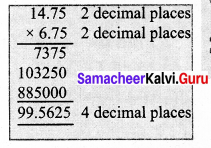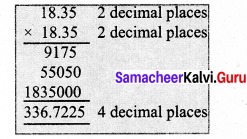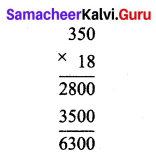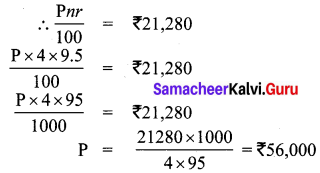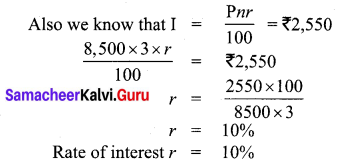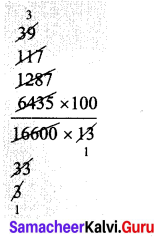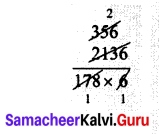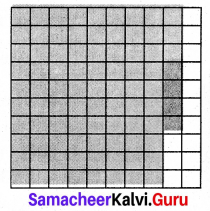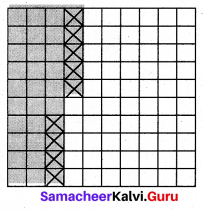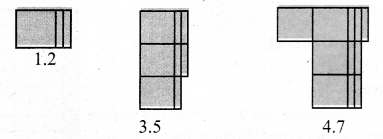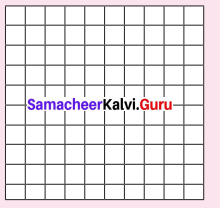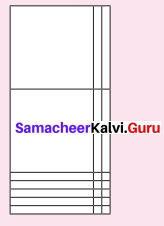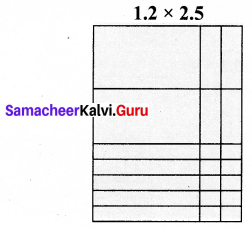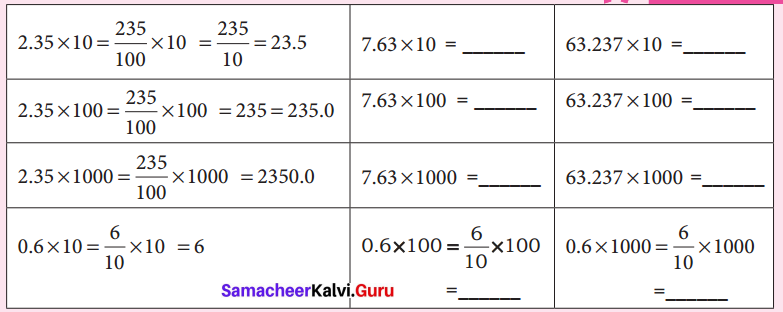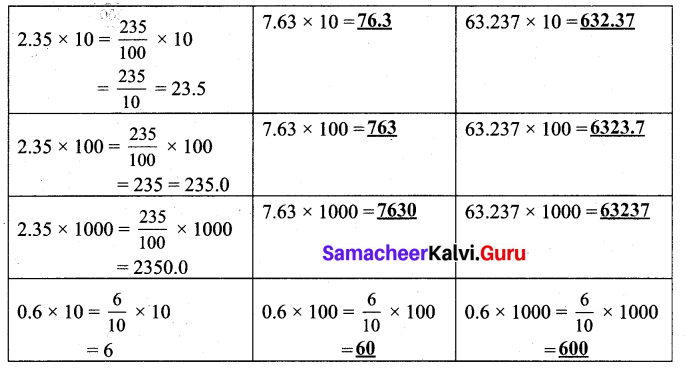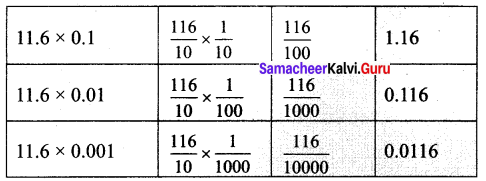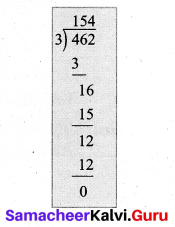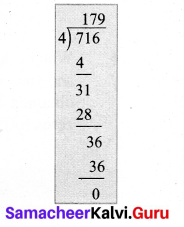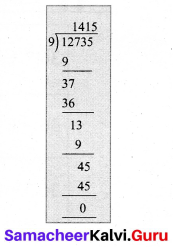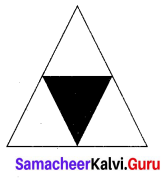Students can Download Maths Chapter 2 Percentage and Simple Interest Additional Questions and Answers, Notes Pdf, Samacheer Kalvi 7th Maths Book Solutions Guide Pdf helps you to revise the complete Tamilnadu State Board New Syllabus and score more marks in your examinations.
Tamilnadu Samacheer Kalvi 7th Maths Solutions Term 3 Chapter 2 Percentage and Simple Interest Additional Questions
Additional Questions and Answers
Exercise 2.1
Question 1.
72% of 25 students are good at science. How many are not good at science?
Solution:
Number of students who are good at science
= 72% of 25 = \(\frac { 72 }{ 100 } \) × 25 = 18 students
∴ Number of students who are not good at science
= 25 – 18 = 7 students
Question 2.
A flower garden has 1000 plants. 5% of the plants are roses and 1% are daisy plants. What is the total number of other plants.
Solution:
Total plants = 1000
Number of rose plants = 5 % of 1000 = \(\frac { 5 }{ 100 } \) × 1000 = 50
Number of Daisy plants = 1 % of 1000 = \(\frac { 1 }{ 100 } \) × 1000 = 10
Total of rose and daisy = 50 + 10 = 60
Number of other plants = 1000 – 60 = 940
![]()
Question 3.
Find 135 % of 80 ₹.
Solution:
135 % of 80 = \(\frac { 135 }{ 100 } \) × 80 = ₹ 108
Exercise 2.2
Question 1.
Neka bought 72.3m of cloth from a role of 100m. Express the cloth bought in terms of percentage.
Solution:
Total length of the cloth = 100 m
Length of cloth bought = 72.3 m
Percentage of cloth bought = \(\frac { 72.3 }{ 100 } \) = 72.3 %
Question 2.
Convert (i) 88 % (ii) 1.86 % into decimals.
Solution:
(i) 88 % = \(\frac { 88 }{ 100 } \) = 0.88
(ii) 1.86 % = \(\frac { 1.86 }{ 100 } \) = 0.0186
Question 3.
Convert (i) 3.35 (ii) 0.5 into percentage.
Solution:
(i) 3.35 = \(\frac { 335 }{ 100 } \) × 100 % = 335 %
(ii) 0.5 = \(\frac { 5 }{ 10 } \) × 100 % = 50 %
![]()
Exercise 2.3
Question 1.
If Gayathri had ₹ 600 left after spending 75% of her money, how much did she have in the beginning?
Solution:
Suppose Gayathri had ₹ X in the beginning.
Then money Spend = 75 % of X = \(\frac { 75 }{ 100 } \) X = \(\frac { 3X }{ 4 } \)
Money left with her = X – \(\frac { 3X }{ 4 } \) = \(\frac { 4X-3X }{ 4 } \) = \(\frac { X }{ 4 } \)
But it is given that money left = ₹ 600
i.e. \(\frac { X }{ 4 } \) = 600
X = 600 × 4 = 2400
∴ Gayathri had ₹ 2,400
Question 2.
Mohan gets 98 marks in her exams. This amounts to 56% of the total marks, What are the maximum marks?
Solution:
Let the maximum marks be X. 56 % of X = 98
\(\frac { 56 }{ 100 } \) × (X) = 98
⇒ X = 98 × \(\frac { 100 }{ 56 } \)
X = 175
∴ Maximum marks = 175
![]()
Exercise 2.4
Question 1.
On what sum of money lent out at 9% per annum for 6 years does the simple interest amount to ₹ 810?
Solution:
Given Simple Interest I = ₹ 810
Let the sum of money (Principal) be P
Rate of interest r = 9 % Per annum.
Time n = 6 years
I = \(\frac { pnr }{ 100 } \)
810 = \(\frac{P \times 6 \times 9}{100}\)
P = \(\frac{810 \times 100}{6 \times 9}\)
P = ₹ 1500
Sum of money required = ₹ 1500
![]()
Question 2.
Find the simple interest on ₹ 1120 for 2 \(\frac { 2 }{ 5 } \) years at the rate of 5% per annum.
Solution:
Simple Interest I = \(\frac { pnr }{ 100 } \)
Principal P = ₹ 1120
Time n = 2 \(\frac { 2 }{ 5 } \) years
= \(\frac { 12 }{ 5 } \) years
Rate of Interest r = 5 %
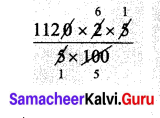
∴ I = 1120 × \(\frac { 12 }{ 5 } \) × \(\frac { 5 }{ 100 } \)
= \(\frac { 672 }{ 5 } \)
= ₹ 134.4
Simple interest = = ₹ 134.4
